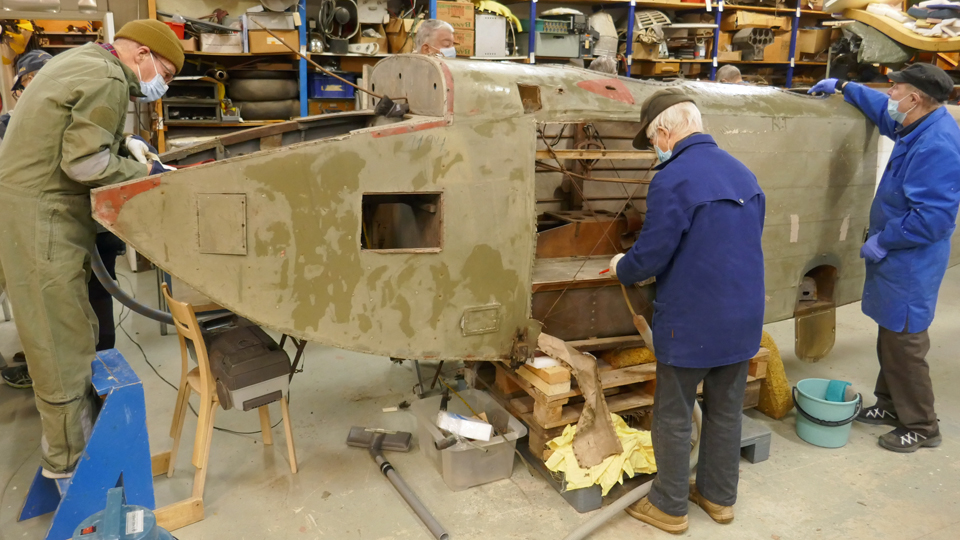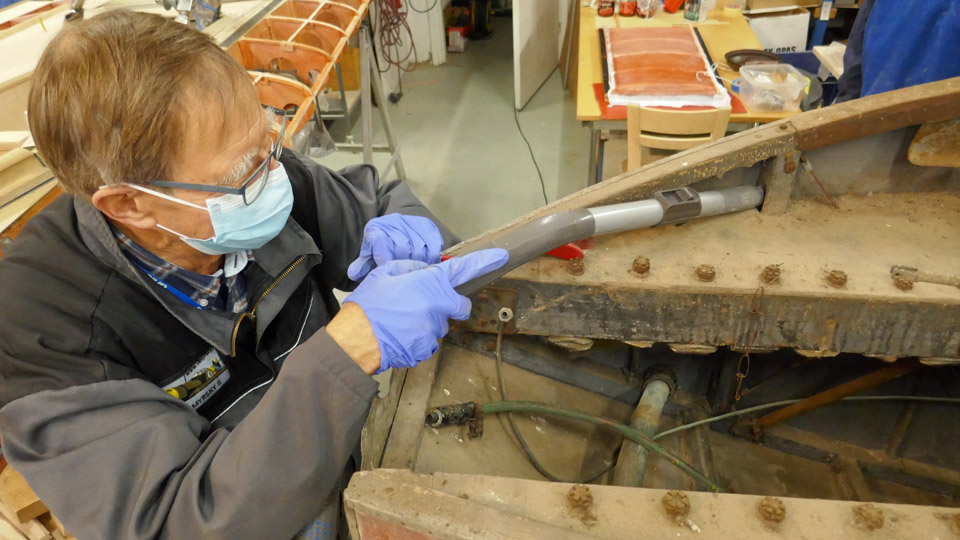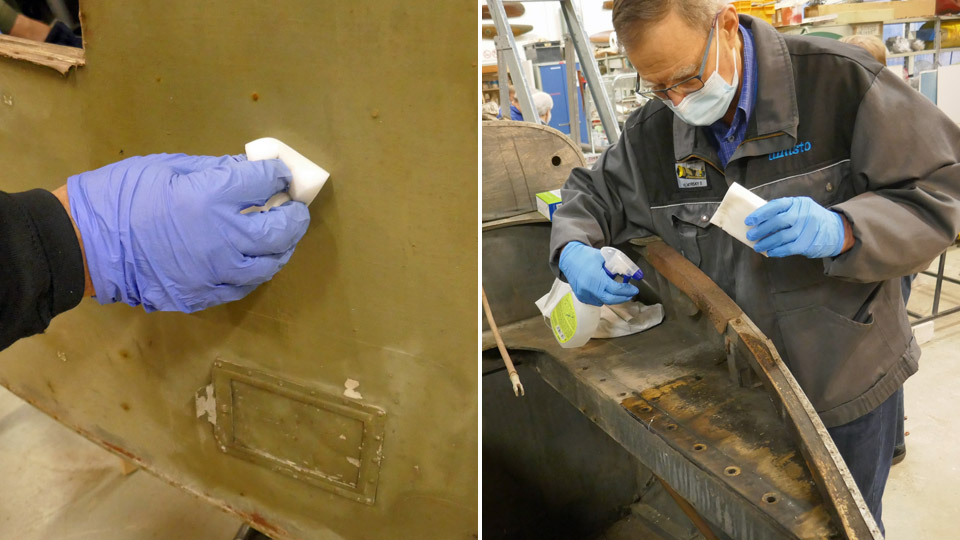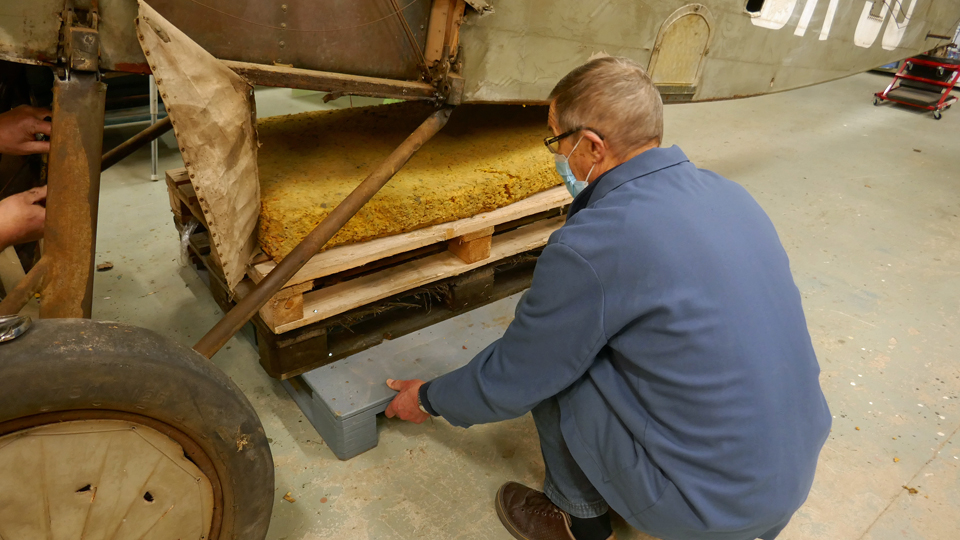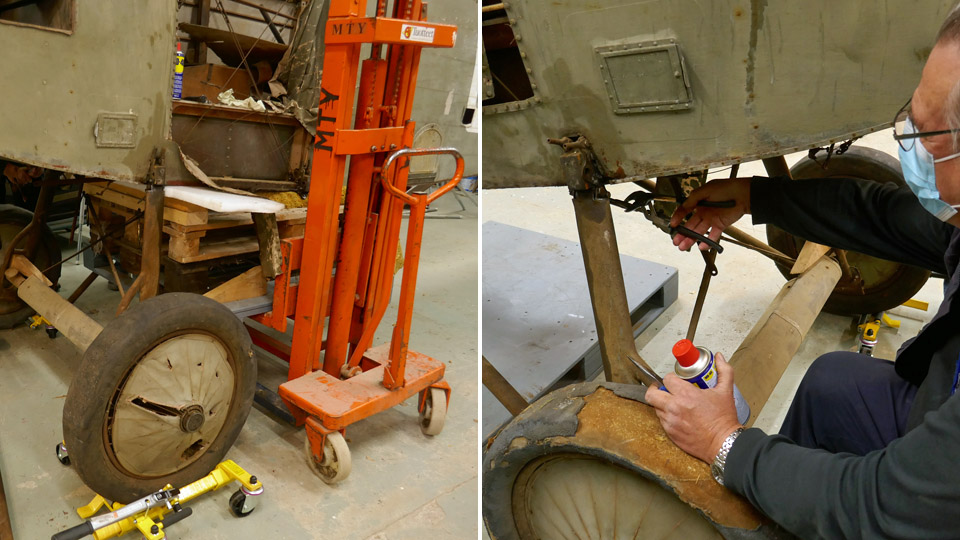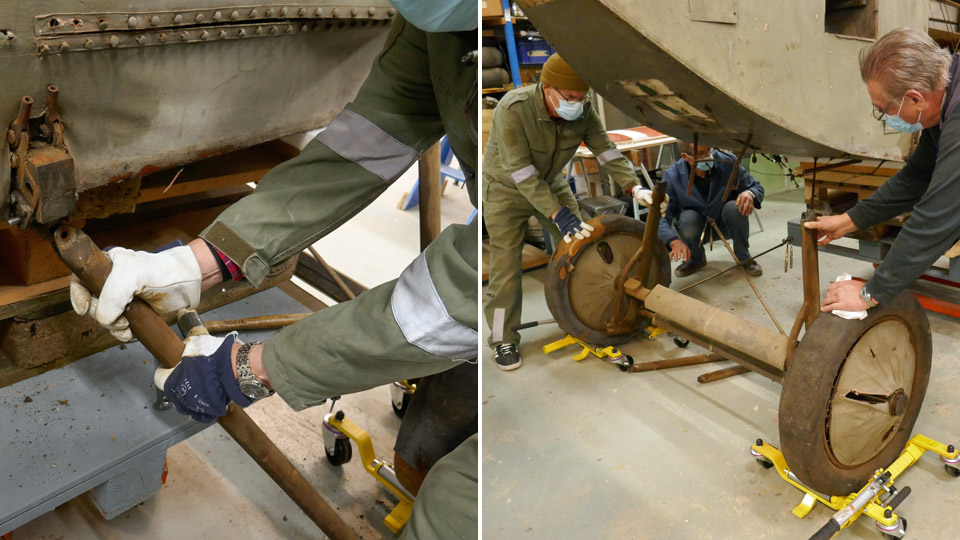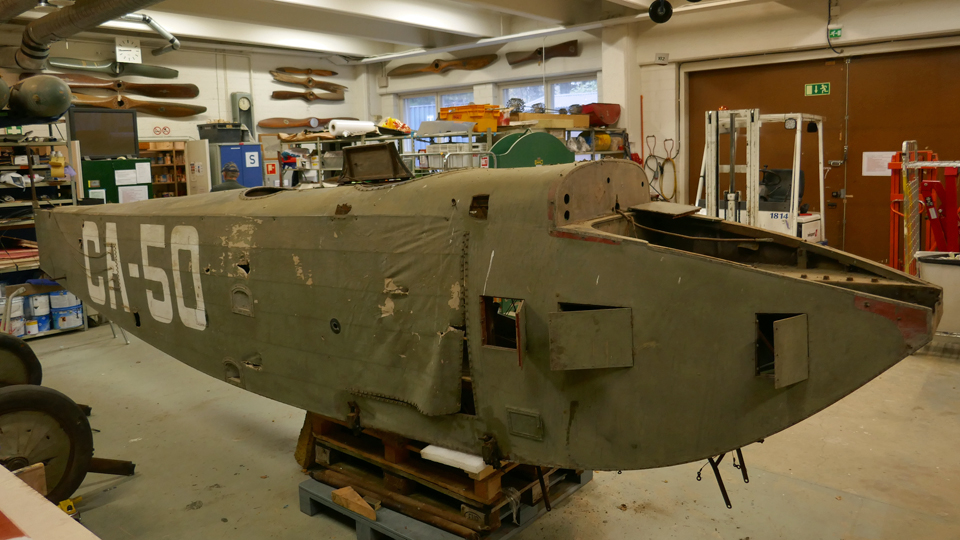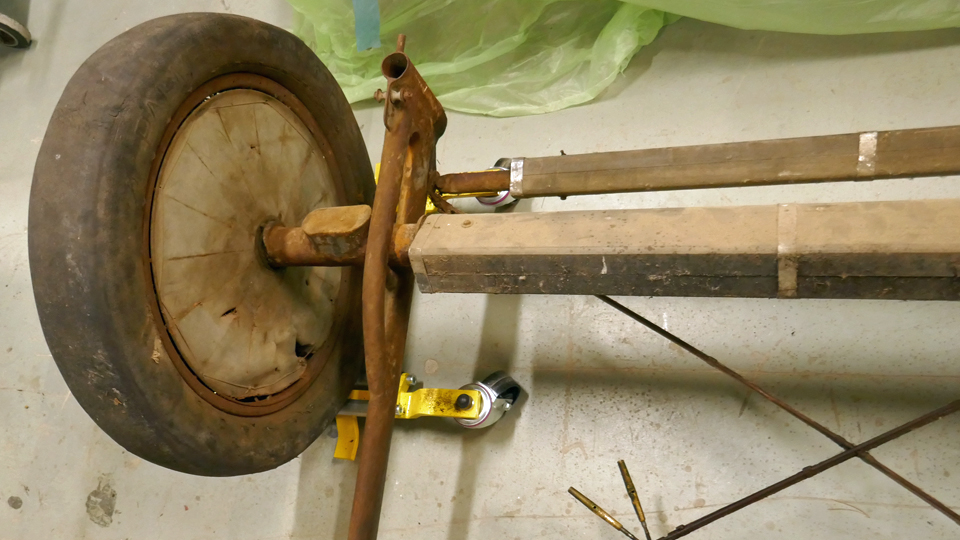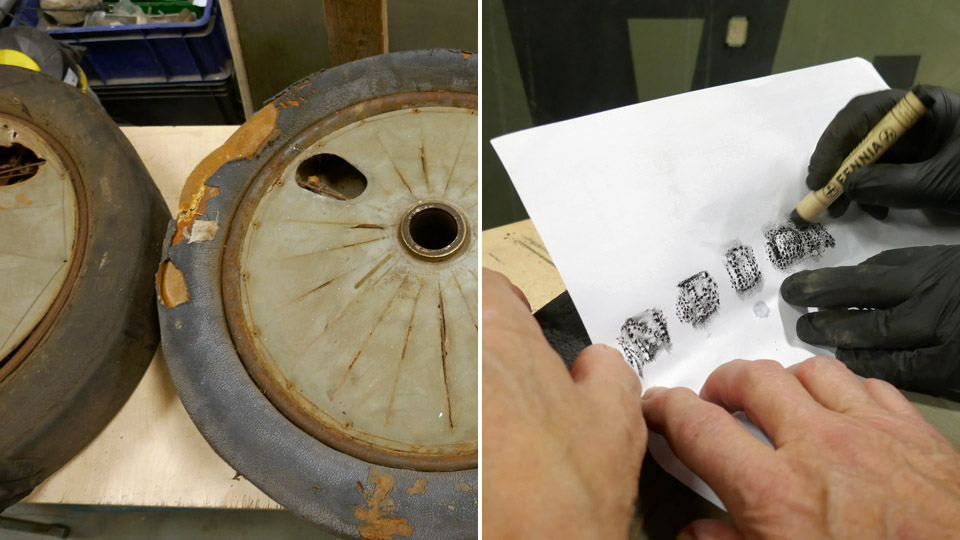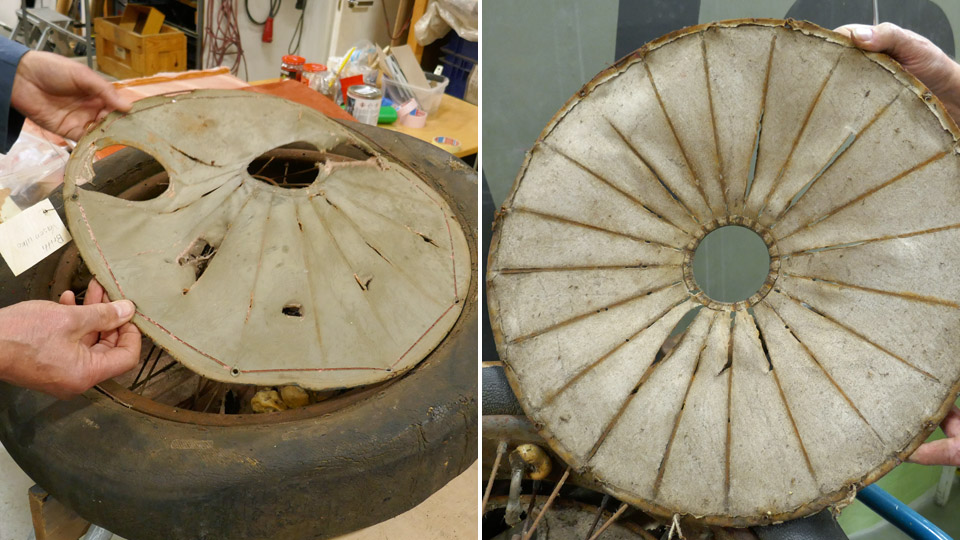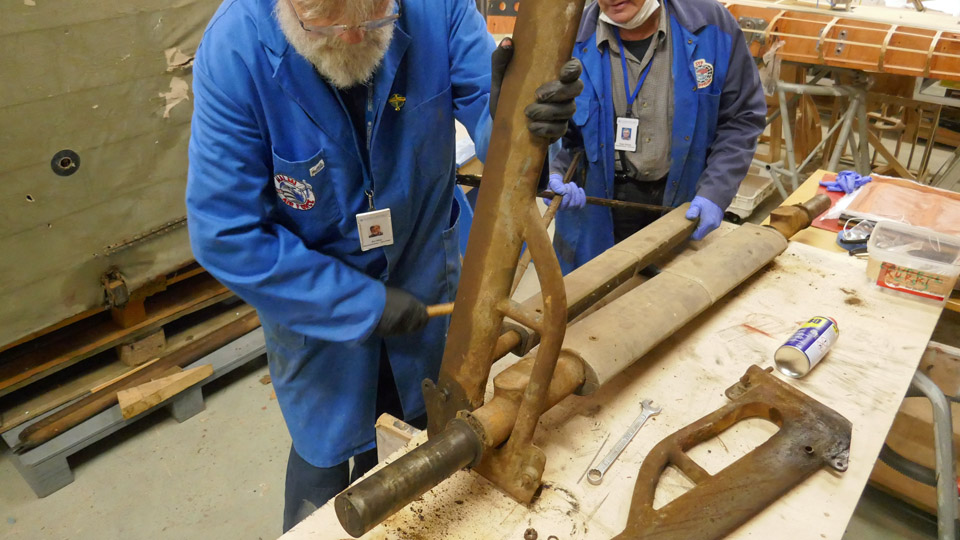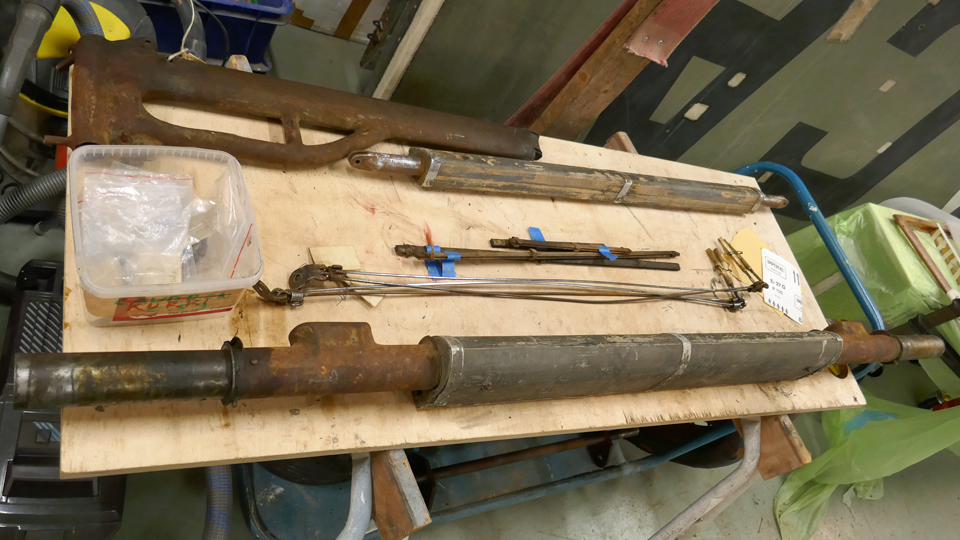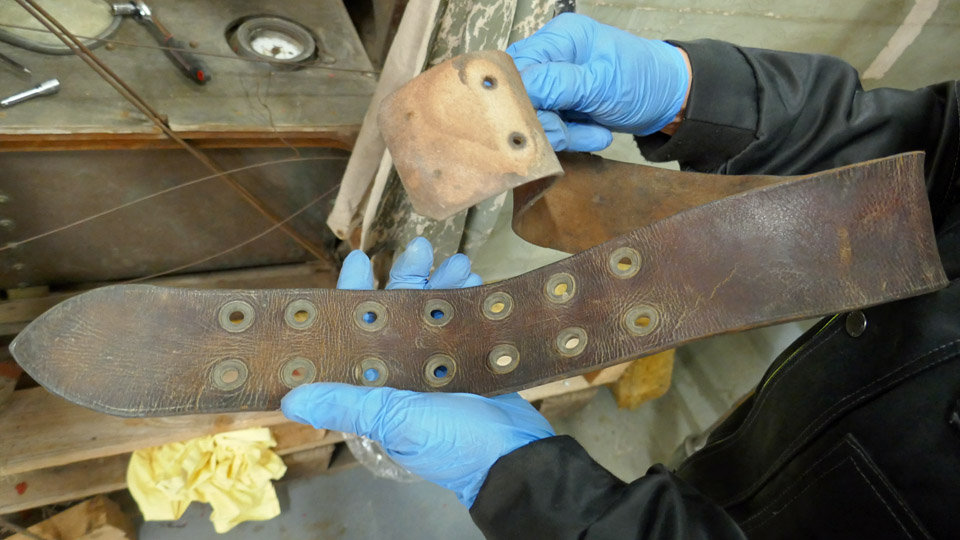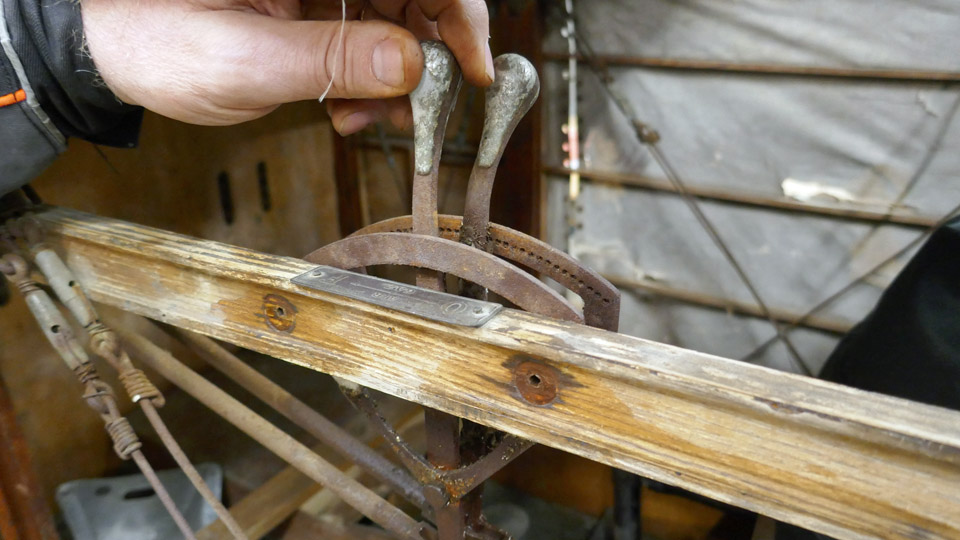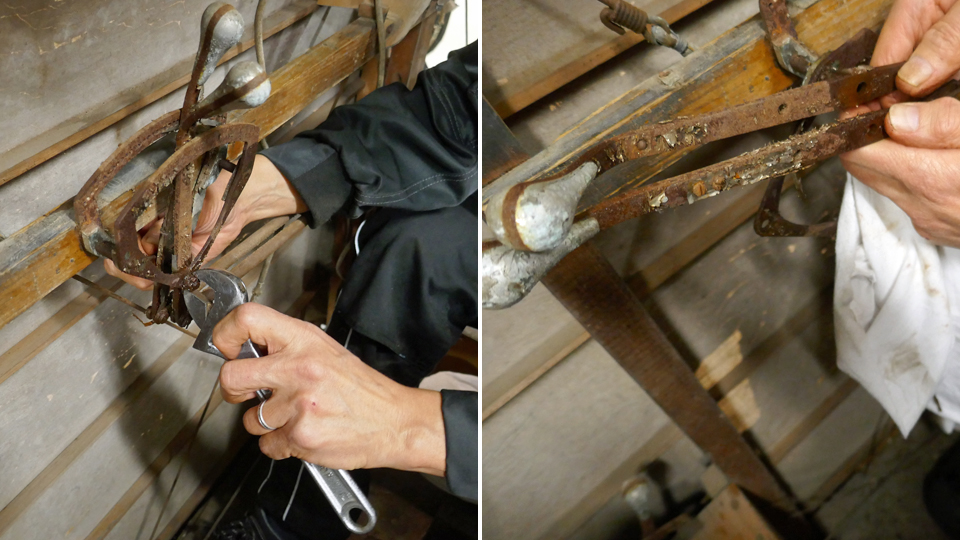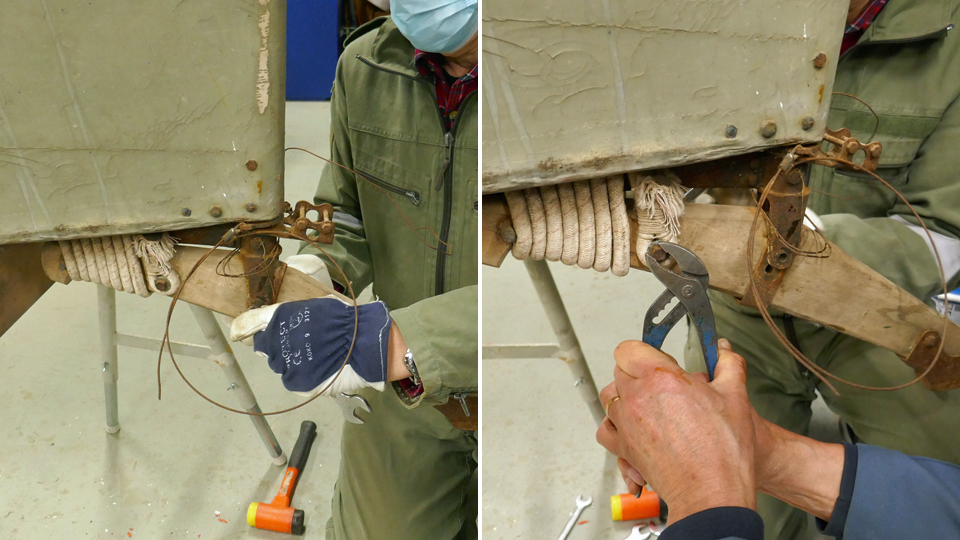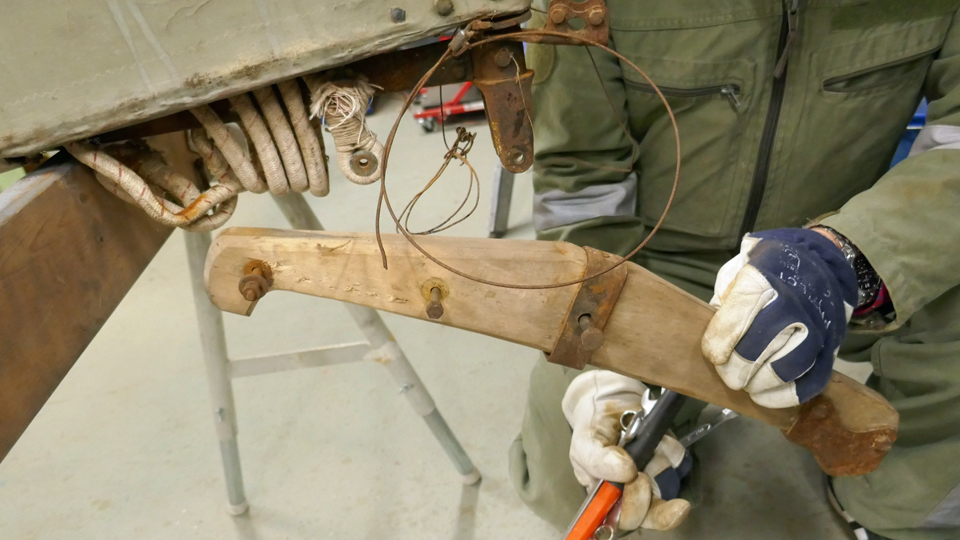Cleaning Caudron fuselage and removing partsMaanantai 22.11.2021 - Tuesday Club member Preparations for the conservation of the Caudron C.59 CA-50 fuselage are under way at the restoration workshop of the Finnish Aviation Museum. Conservation of the fuselage means that rusting of the metal parts is halted as well as rotting of the wooden parts. The dirty plywood parts of the fuselage will be cleaned, and the badly cracked paint surfaces are being attempted to be revived. The damaged parts of the fuselage will be repaired. The CA-50 fuselage will therefore not be restored to its airworthy condition from the late 1920’s.
The first task was the cleaning of the plywood surfaces of the fuselage and the empty engine bay. The cracked fabric surfaces will not be touched. At first the surfaces were vacuum cleaned, after that the cleaning went on with a damp wonder sponge, which is well suited for cleaning dirty plywood surfaces. It’s surprisingly efficient and gentle. The engine bay plywood surfaces were so grimy that the wonder sponge treatment had to be renewed a few times. To help in cleaning the surfaces, a solution of water and Sinol was used, administered from a spray bottle.
The dissembling of the fuselage parts was started from the landing gear. For that purpose the fuselage had to be lifted on a trestle, so that the landing gear could be removed from under the nose. For the lifting a supporting bed was built from three padded wooden pallets. The trestle was pushed under the fuselage below the cockpit. After this the forks of a stacker were pushed under the supporting bed and the fuselage was lifted on to the supporting bed in order to remove the landing gear.
The landing gear diagonal struts were removed next. Although the nuts at the ends of the attachment bolts were thickly coated with rust, they opened surprisingly easily. Even after the Caudron’s 93 years of storage. After the ends of the diagonal strut and the bracing grid had been removed from the fuselage, the landing gear now resting on auxiliary wheels was pushed away from under the nose of the Caudron. The fuselage was then lowered to rest on the supporting bed.
The landing gear was then continued to be taken apart for easier rust removal. First the wheels were detached. Both of them were in a really bad shape. Furthermore, the tyres had been filled with polyurethane at some point. With the help of paper and felt pen the markings on the surface of the tyres were worked out. One of them was found to be French and the other British.
The landing gear wheels were covered in the 1920-1930’s fashion with doped canvas
After detaching the landing gear, the Caudron’s cockpit was taken under work. After vacuum cleaning and Sinol-water treatment of the cockpit surfaces the seat belts were removed. On the port side of the front and rear cockpits there are the throttle and mixture levers. They are fastened on the throttle quadrant.
The rear and front cockpit levers are connected with push rods. This was after all a trainer. The throttle and mixture levers were thickly coated with rust. They were taken apart with their push rods to be cleaned from rust. It was noticed, taking the levers apart, that there were traces of nickel plating on the surfaces. Both of the levers and their quadrant have originally been nickeled on the surface. Still to be dismantled from the cockpits are for instance the control columns with their connecting rods and the pilot’s seat in the rear cockpit.
The Caudron has a wooden tailskid. In its rear end there is a metal strengthening to prevent wearing. In the middle of the tailskid there is a bolt which was detached. It fastens the tailskid to the fuselage. The tailskid pivots around this bolt. A length of bungee cord tied around the tailskid and its support in the fuselage acts as suspension for the tailskid. The bungee cord was also detached, so the tailskid has been completely dismantled for further work. Photos: Lassi Karivalo. Translation: Matti Liuskallio. |
|
Avainsanat: aviation history, restoration, Caudron C.59, CA-50 |


